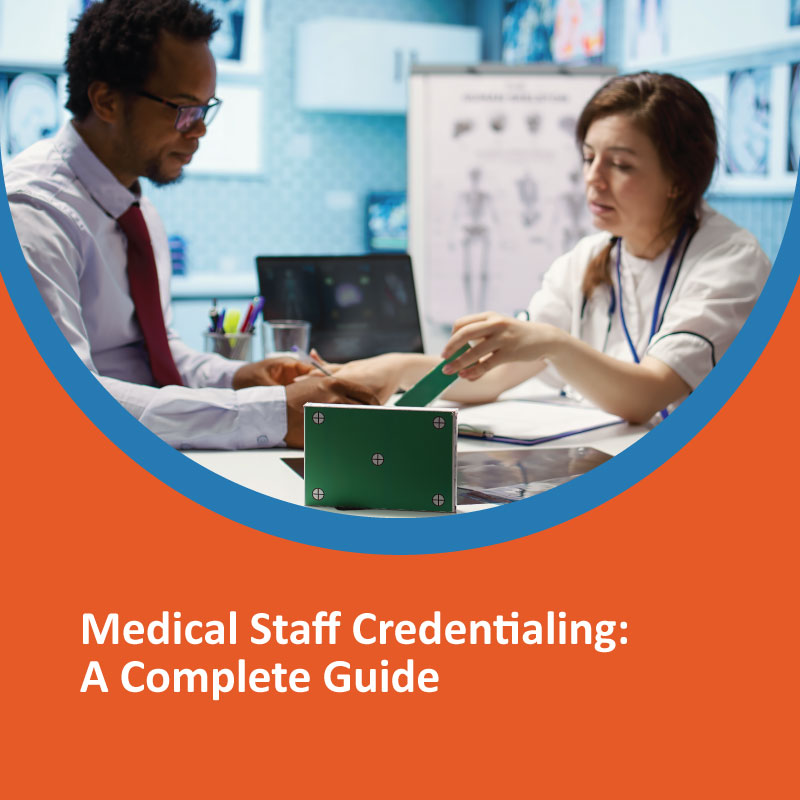Medical staff credentialing is the process of verifying that healthcare providers are qualified, trained, and licensed to offer medical services. It is a vital step that protects patient safety, maintains quality standards, and ensures compliance with healthcare regulations. Whether you’re managing a hospital, clinic, or telehealth platform, credentialing your medical staff is non-negotiable.
You may read: Understanding Medical Doctor Credentials: A Complete Guide
What is Medical Staff Credentialing?
Credentialing in healthcare refers to the validation of a medical professional’s qualifications. This includes their education, training, work experience, licensure, board certifications, and any disciplinary history. It is a thorough process used to confirm that the provider meets industry and legal standards.
Why is Credentialing Important?
Credentialing ensures that only qualified and competent individuals deliver medical care. This process helps:
- Protect patient safety
- Reduce liability risks for healthcare organizations
- Ensure compliance with regulatory bodies
- Support hospital accreditation and reimbursements
- Promote trust and professionalism
The Medical Staff Credentialing Process
1. Application Submission
A healthcare provider must submit a detailed credentialing application. This includes:
- Medical school transcripts
- Residency or fellowship details
- Board certifications
- Licensure and DEA registrations
- Malpractice history and insurance
2. Primary Source Verification (PSV)
Hospitals and credentialing committees verify the applicant’s documents directly from the issuing organizations. This step confirms the legitimacy of the provider’s qualifications.
3. Credentialing Committee Review
After verification, the credentialing committee evaluates the provider’s profile. They assess qualifications, work history, and disciplinary actions to make approval decisions.
4. Granting Clinical Privileges
Once credentialed, the provider receives specific clinical privileges. These privileges define the medical procedures and responsibilities the provider can perform at that facility.
Re-Credentialing: Why It’s Needed
Credentialing is not a one-time task. Providers must be re-credentialed every 2 to 3 years. This ensures that:
- Licenses and certifications are still valid
- No new legal or malpractice issues have arisen
- Performance remains consistent with quality standards
Digital Solutions for Credentialing
The Role of Credentialing Software
Today, many healthcare facilities use automated credentialing platforms. These tools streamline the process by:
- Reducing paperwork
- Improving data accuracy
- Automating renewal reminders
- Minimizing human error
- Speeding up provider onboarding
Benefits of Digital Credentialing
Digital systems help manage large volumes of provider data while improving compliance. They also provide real-time alerts for expiring documents or upcoming audits.
Compliance and Regulatory Bodies
Credentialing is essential for meeting standards set by organizations such as:
- The Joint Commission (TJC)
- National Committee for Quality Assurance (NCQA)
- Centers for Medicare & Medicaid Services (CMS)
Without proper credentialing, a facility can lose accreditation, face legal penalties, or be denied insurance reimbursements.
Challenges in Medical Staff Credentialing
Credentialing can be time-consuming and prone to delays if not managed properly. Common challenges include:
- Incomplete or inaccurate applications
- Delayed primary source responses
- Inconsistent credentialing processes across departments
- Tracking renewals and expirations manually
Credentialing and Patient Safety
Credentialing directly impacts patient care. By confirming that every provider is qualified, hospitals minimize the risk of medical errors. It ensures that only those with proven training and skills are allowed to perform high-risk procedures or prescribe medications.
Credentialing Across States and Telehealth
As telemedicine grows, credentialing has become more complex. Providers offering services in multiple states must be credentialed under each state’s licensing board. This requires careful coordination and ongoing tracking.
Conclusion: Why Medical Staff Credentialing Matters
Medical staff credentialing is more than a formality—it’s a pillar of healthcare safety and professionalism. It ensures that patients are treated by licensed, competent, and thoroughly vetted providers. For healthcare institutions, proper credentialing protects against risk, boosts reputation, and ensures regulatory compliance. Embracing modern credentialing systems and staying updated with re-credentialing requirements is key to delivering trusted, high-quality care.
FAQs
Q1: What is medical staff credentialing?
Medical staff credentialing is the process of verifying a healthcare provider’s qualifications, licenses, and experience before allowing them to practice.
Q2: Why is credentialing important in healthcare?
It ensures patient safety, legal compliance, provider competence, and eligibility for insurance reimbursements and hospital accreditation.
Q3: How often does credentialing need to be done?
Credentialing is typically renewed every 2 to 3 years to ensure qualifications and licenses are up to date.
Q4: Who is responsible for medical staff credentialing?
Credentialing is managed by a hospital’s medical staff office, HR department, or a credentialing committee, often using digital systems.
Q5: What’s the difference between credentialing and privileging?
Credentialing verifies qualifications, while privileging defines which procedures a provider is authorized to perform within a facility.


